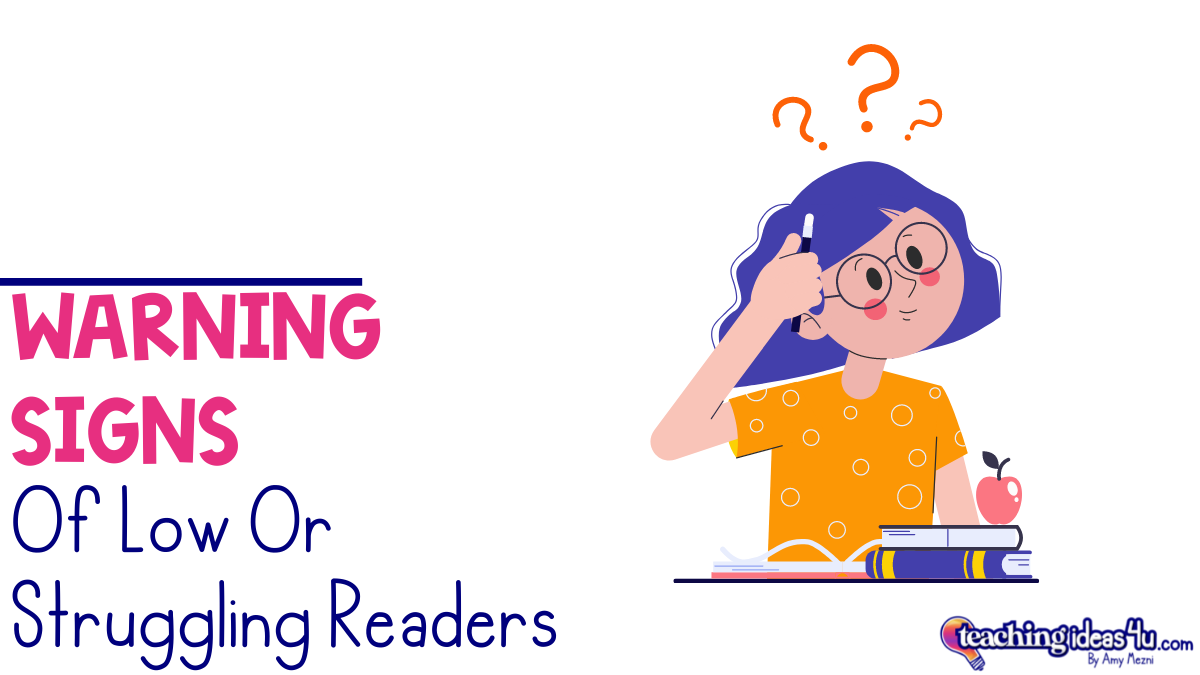Warning Signs Of Struggling Readers
Did you know that students who fall behind in reading rarely catch up? Studies have shown that a student’s first-grade reading level is a good predictor of their reading achievement through high school. As students with poor reading skills fall farther behind, they tend to avoid reading, which weakens their skills and compounds the problem.
Warning Signs of a Struggling Reader
Primary teachers focus on reading and are usually familiar with signs of struggling readers. However, upper elementary and secondary teachers are more content-focused, and students are expected to read to learn - not learn to read. Teachers of older students are not always as familiar with reading issues. So how can teachers tell when a student is struggling with reading?
Although a student might exhibit one of the following signs in isolation, parents and teachers should be concerned if a student has many of the following red flags:
Avoids reading.
Difficulty sounding out and/or chunking words.
Difficulty recognizing words, especially sight words and common words.
Poor spelling.
Poor reading fluency - reading is laborious, choppy, guesses at words, and doesn’t recognize the same word when it appears multiple times in a text.
Types of Reading Problems
Although students many have different combinations of abilities and gaps in their reading, there are generally three categories of reading difficulties (Little Sunshine’s Playhouse & Preschool 2020):
Specific Word-Reading Difficulties are problems reading words but not with reading comprehension. Signs of this issue are:
Oral vocabulary and auditory comprehension are better than reading comprehension.
Poor reading comprehension except when they can decode the text.
Poor decoding skills.
Poor fluency.
Poor spelling.
If reading comprehension is more impaired than a student’s listening comprehension, poor word recognition is most likely the cause.
Specific Reading Comprehension Difficulties are when a student has poor reading comprehension although their word-reading skills are average or better. Signs of this issue are:
Good decoding and reading skills.
May have good spelling.
Poor reading comprehension.
Oral vocabulary and listening comprehension may be weak.
Fluency may be weak due to language limitations (not decoding issues.)
Mixed Reading Difficulties are a combination of the previous two issues. Students usually demonstrate specific strengths, especially on topics of high interest or in which they have solid background knowledge. On other texts, they have:
Poor decoding.
Poor reading comprehension, even when they can decode the text.
Weak reading fluency from limitations in decoding and/or language.
One thing to note is that students could have an auditory processing disorder. Auditory processing issues are frequently misdiagnosed and can coexist with other issues, such as ADHD and dyslexia. If a student has good reading comprehension but poor listening comprehension, it is possible they have an auditory processing disorder.
A good resource for more information is the ERIC document Who’s Really Struggling?: Middle School Teachers’ Perceptions of Struggling Readers by Leah K. Moreau.
Be sure to read next week’s post for tips on how to reach struggling readers in the middle grades.

